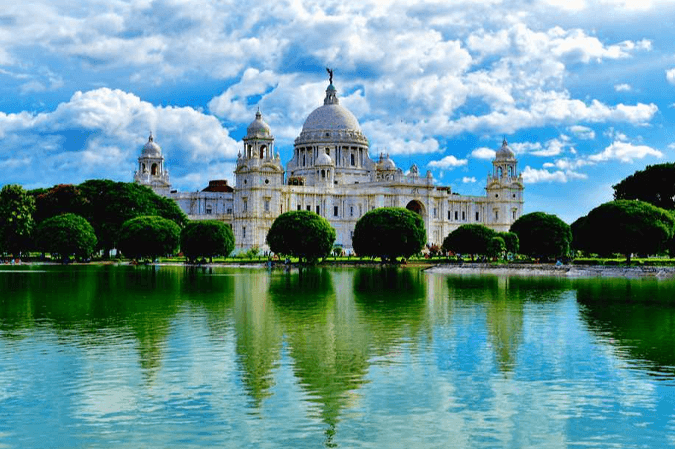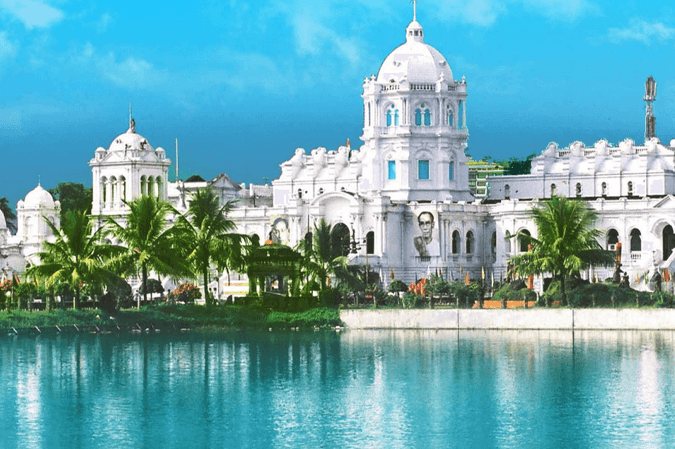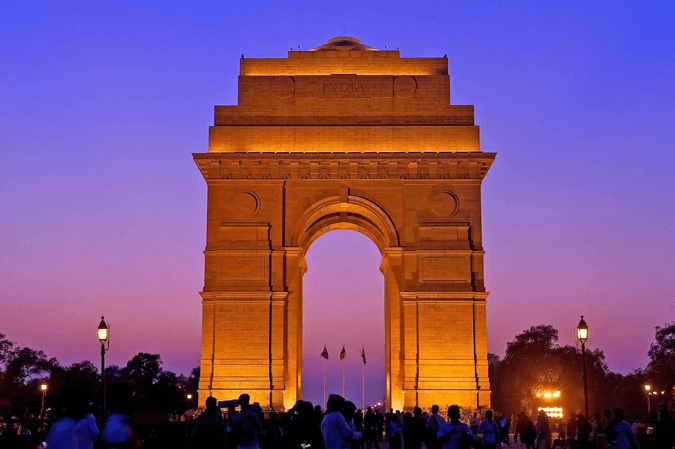1. History
West Bengal, located in eastern India, has a rich and complex history that spans thousands of years. The region has been a cultural and intellectual hub since ancient times, with roots tracing back to the Vedic period. It was part of the ancient kingdoms of Magadha and Maurya and later became a major center of Buddhism during the reign of Emperor Ashoka.
In medieval times, Bengal was a powerful state under the rule of the Bengal Sultanate. The region experienced significant economic and cultural growth, especially under the rule of the Pala and Sena dynasties. The arrival of Islam brought further cultural diversity, and Bengal became known for its art, literature, and architecture.
During the British colonial period, Bengal was the epicenter of the Indian independence movement. The partition of Bengal in 1905, followed by its reunification in 1911, played a crucial role in the nationalistic struggle. Post-independence, Bengal was partitioned again in 1947, leading to the creation of the state of West Bengal in India and East Bengal, which later became Bangladesh.
2. Landscape
West Bengal’s landscape is incredibly diverse, ranging from the high peaks of the eastern Himalayas to the vast Gangetic plains and the Sundarbans delta. The state can be divided into the following geographical regions:
- Himalayan Region: The northern part of West Bengal, including Darjeeling and Kalimpong, is characterized by the lofty Himalayan ranges and lush tea gardens.
- Terai and Duars: The foothills of the Himalayas, known for their dense forests and wildlife sanctuaries.
- Gangetic Plains: The central region, which is the heartland of agriculture, with the Hooghly River flowing through it.
- Rarh Region: A plateau region with undulating terrain, covering districts like Birbhum and Bankura.
- Sundarbans: The southern coastal region is a unique deltaic region, home to the largest mangrove forest in the world and the famous Bengal tiger.
3. Area
West Bengal covers an area of approximately 88,752 square kilometers (34,267 square miles), making it one of the smaller states in India by area. Despite its size, it is one of the most densely populated states in the country.
4. Climatic Conditions
West Bengal experiences a variety of climatic conditions, largely influenced by its diverse geography:
- Summer: (March to June) is hot and humid, with temperatures ranging from 30°C to 40°C (86°F to 104°F). The coastal regions experience high humidity, while the northern hills are cooler.
- Monsoon: (June to September) brings heavy rainfall, especially in the northern and coastal regions. The monsoon is critical for agriculture but often leads to flooding.
- Winter: (November to February) is mild and pleasant, with temperatures ranging from 10°C to 25°C (50°F to 77°F). The hill stations in the north experience colder temperatures.
5. Historical Places
West Bengal is rich in historical and cultural heritage, with numerous sites that reflect its glorious past:
- Victoria Memorial: Located in Kolkata, this grand marble structure is a symbol of British India and now serves as a museum.
- Dakshineswar Kali Temple: A famous temple on the banks of the Hooghly River, associated with the mystic saint Ramakrishna Paramahamsa.
- Howrah Bridge: An iconic cantilever bridge over the Hooghly River, connecting Kolkata with Howrah.
- Bishnupur: Known for its terracotta temples built by the Malla kings, Bishnupur is a UNESCO World Heritage Site.
- Shantiniketan: Founded by Rabindranath Tagore, this cultural and educational hub is known for its unique blend of art, education, and culture.
6. Festivals
West Bengal is known for its vibrant and diverse festivals, reflecting the state’s rich cultural heritage:
- Durga Puja: The most important festival, celebrated with grandeur and devotion, particularly in Kolkata. It marks the victory of Goddess Durga over the buffalo demon Mahishasura.
- Poila Boishakh: The Bengali New Year, celebrated in mid-April with traditional music, dance, and food.
- Kali Puja: Similar to Diwali, this festival is dedicated to Goddess Kali and involves lighting lamps and fireworks.
- Rath Yatra: Celebrated in cities like Kolkata and Mahesh, where the chariots of Lord Jagannath are pulled through the streets.
- Christmas: Particularly in Kolkata, Christmas is celebrated with much enthusiasm, reflecting the city’s multicultural spirit.
7. Environment
West Bengal’s environment is marked by its biodiversity and varied ecosystems:
- Sundarbans Mangrove Forest: A UNESCO World Heritage site, the Sundarbans is the largest mangrove forest in the world and home to the Bengal tiger, estuarine crocodiles, and a variety of bird species.
- Darjeeling Himalayan Region: Known for its tea gardens and rich biodiversity, this region is a part of the Eastern Himalayan biodiversity hotspot.
- Gorumara National Park: Located in the Terai region, it is known for its population of Indian rhinoceroses, elephants, and diverse bird species.
- Jaldapara Wildlife Sanctuary: A haven for the endangered one-horned rhinoceros and other wildlife, located in the foothills of the Himalayas.
The state faces environmental challenges such as deforestation, pollution, and the effects of climate change, especially in the Sundarbans, where rising sea levels threaten the ecosystem.
8. Society
West Bengal has a diverse and dynamic society, shaped by its history, culture, and geography:
- Population: The state is densely populated, with a mix of various communities, including Bengali Hindus, Muslims, Christians, and tribal groups.
- Language: Bengali is the official language, with English also widely used in education and administration. Several dialects and minority languages are spoken across the state.
- Culture: West Bengal is a cultural powerhouse, known for its contributions to art, literature, music, and cinema. The state has produced luminaries like Rabindranath Tagore, Satyajit Ray, and Amartya Sen.
- Cuisine: Bengali cuisine is famous for its use of fish, rice, and sweets. Iconic dishes include macher jhol (fish curry), shorshe ilish (hilsa fish in mustard sauce), and sweets like rasgulla and sandesh.
9. Interesting and Hidden Facts
- Birthplace of Nobel Laureates: West Bengal is the birthplace of several Nobel laureates, including Rabindranath Tagore (Literature), Amartya Sen (Economics), and Mother Teresa (Peace).
- India’s First Metro: Kolkata was the first city in India to have a metro rail system, which started operating in 1984.
- World’s Largest Delta: The Sundarbans, located in West Bengal, is part of the world’s largest delta formed by the confluence of the Ganges, Brahmaputra, and Meghna rivers.
- Bengal Renaissance: West Bengal was the center of the Bengal Renaissance in the 19th and early 20th centuries, a period of cultural, social, and intellectual reformation.
- Oldest Running Polo Club: The Calcutta Polo Club, established in 1862, is the oldest polo club in the world.
Sources
- History and Cultural References:
- Sarkar, Sumit. The Swadeshi Movement in Bengal 1903-1908. People’s Publishing House, 1973.
- Chatterjee, Partha. The Nation and Its Fragments: Colonial and Postcolonial Histories. Princeton University Press, 1993.
- Geography and Landscape:
- Encyclopedia Britannica, “West Bengal,” 2023.
- West Bengal Tourism Official Website, “Explore West Bengal,” 2023.
- Climate:
- Indian Meteorological Department (IMD), “Climatic Conditions of West Bengal,” 2022.
- Historical Places:
- Archaeological Survey of India, “Monuments of West Bengal,” 2021.
- Lonely Planet India, West Bengal: A Cultural History, Lonely Planet Publications, 2020.
- Festivals:
- The Hindu, “Festivals of West Bengal,” 2022.
- West Bengal Tourism Official Website, “Festivals and Events,” 2023.
- Environment:
- West Bengal Forest Department, “Biodiversity and Conservation in West Bengal,” 2021.
- Ministry of Environment, Forest and Climate Change, “Environmental Profile of West Bengal,” 2020.
- Society:
- The Times of India, “West Bengal: Social Indicators and Development,” 2022.
- United Nations Development Programme (UNDP), “Human Development Report 2020.”
- Interesting and Hidden Facts:
- Economic Times, “Unique Aspects of West Bengal’s Economy,” 2022.
- West Bengal Tourism Official Website, “Interesting Facts about West Bengal,” 2023.
- Image Source: www.holidify.com



